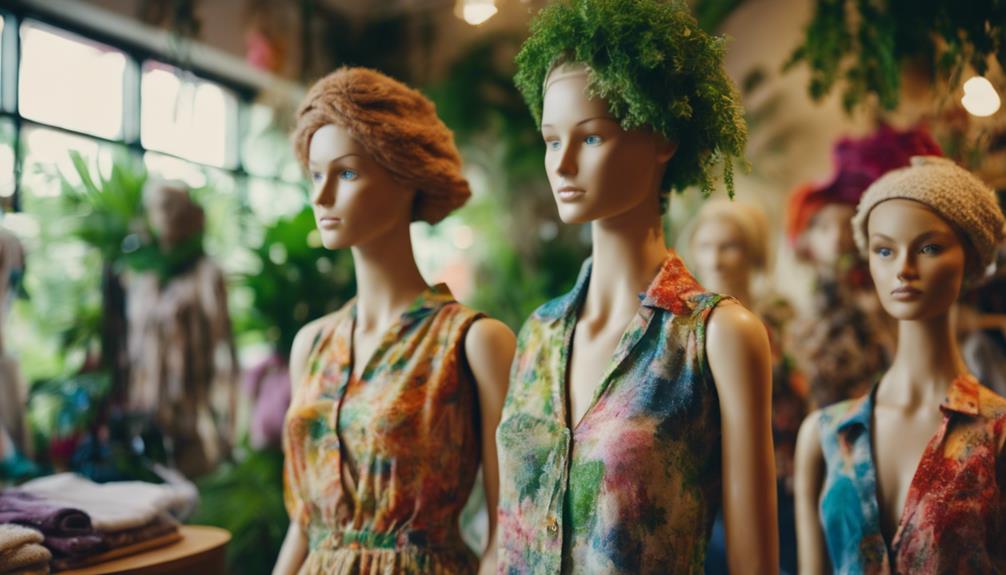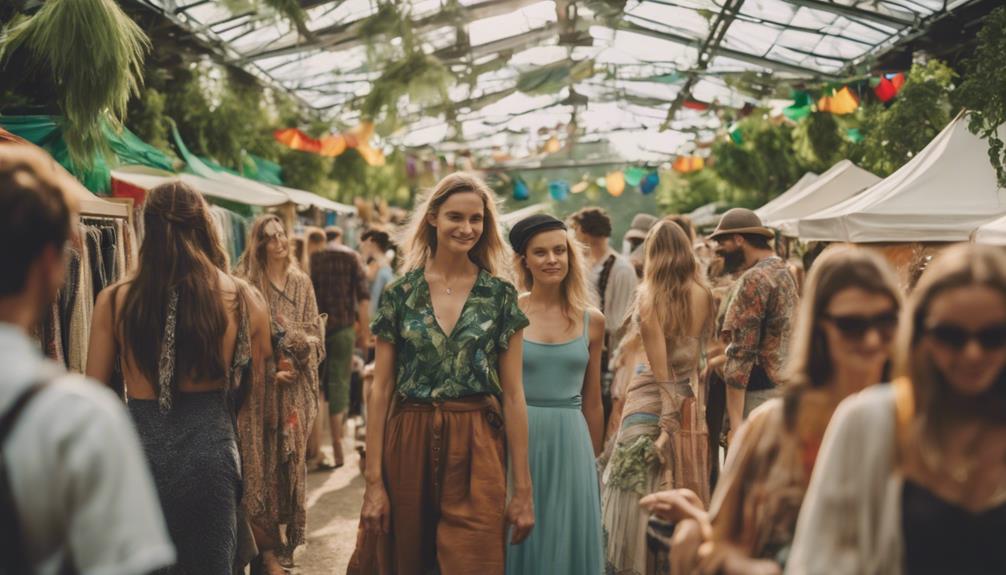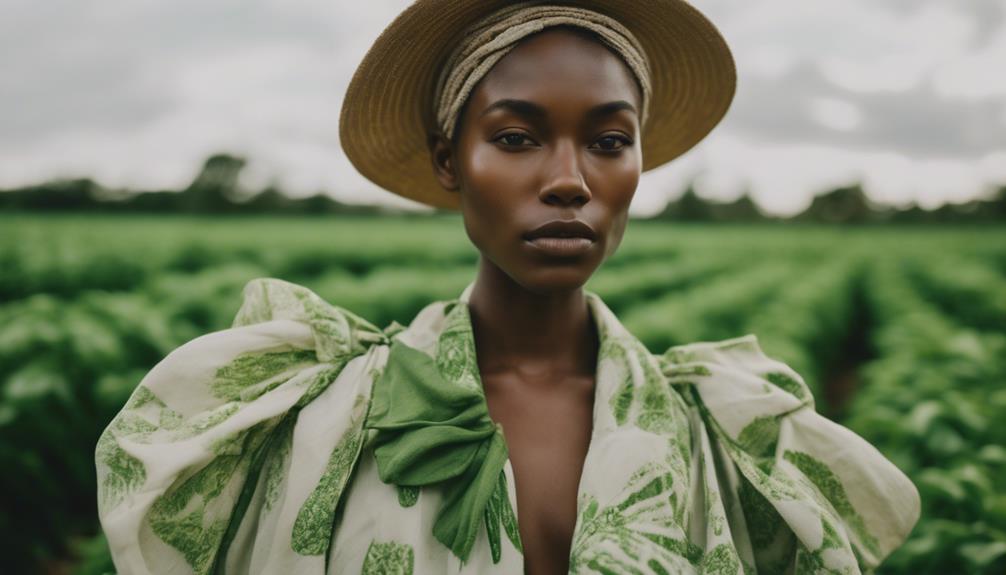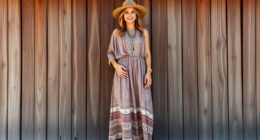Sustainable fashion is important because it helps protect the environment and promotes ethical practices. By selecting eco-friendly materials and practicing responsible production, you can actively reduce pollution and conserve resources. The fashion industry significantly contributes to carbon emissions and waste, with most garments ending up in landfills after just a few years. Additionally, sustainable brands prioritize fair wages and safe working conditions for employees, countering the exploitative practices of fast fashion. Your choices have the power to drive change, leading to a more sustainable future for both the planet and its people. Curious about the deeper impact of your fashion choices? There’s more to explore!
Key Takeaways
- Sustainable fashion reduces environmental impact by using eco-friendly materials and responsible production practices, combating climate change and resource depletion.
- It addresses the waste generation crisis, as 92 million tonnes of fashion waste are produced annually, promoting longevity over disposability.
- Ethical considerations in sustainable fashion ensure fair wages and safe working conditions for workers, contrasting with the exploitation prevalent in fast fashion.
- Transparency in sustainable fashion builds consumer trust, with over 66% of consumers willing to pay more for brands that prioritize sustainability.
What Is Sustainable Fashion?
Sustainable fashion focuses on reducing environmental impact by using eco-friendly materials and promoting responsible production practices. This approach to fashion emphasizes the importance of ethical and sustainable choices that benefit both the planet and the people involved in the production process.
When you choose sustainable fashion brands, you're not just purchasing clothing; you're supporting a movement that prioritizes quality over quantity and longevity over disposability.
Sustainable fashion challenges the fast fashion industry, which contributes considerably to global carbon emissions and waste. By selecting garments made from organic or recycled materials, you help reduce harmful environmental impacts and encourage brands to adopt more responsible practices.
Ethical considerations are equally essential; sustainable brands guarantee fair treatment of workers and promote transparency in their supply chains. This transparency allows you to make informed choices about the brands you support, guaranteeing that your purchases reflect your values.
When you embrace sustainable fashion, you contribute to a healthier planet and a more equitable industry. Fundamentally, sustainable fashion is about creating a positive change in the world through the clothing you wear.
Environmental Impact of Fashion
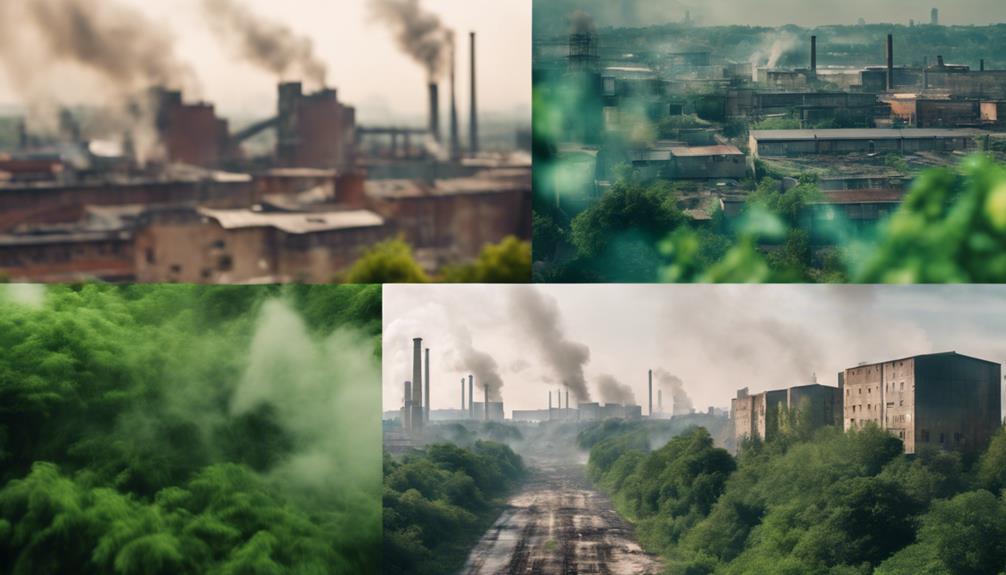
The fashion industry considerably harms the environment, contributing around 10% to global carbon emissions and polluting water sources through its manufacturing processes. You mightn't realize it, but the environmental impact of fashion extends far beyond just carbon emissions.
Textile dyeing is the second largest water polluter globally, responsible for about 20% of industrial wastewater pollution. This severely affects aquatic ecosystems, putting countless species at risk.
Additionally, the industry consumes a staggering 93 billion cubic meters of water each year, exacerbating global water scarcity. To put it in perspective, producing just one pair of jeans requires around 2,000 gallons of water. Conventional cotton production isn't much better, using about 2,700 liters of water per shirt. However, by opting for sustainable clothes made from organic cotton, which uses 91% less water, you can greatly reduce your environmental footprint.
Moreover, the textile industry contributes to about 9% of annual microplastic losses to oceans. These fibers from synthetic fabrics pose a serious threat to marine life. By embracing sustainable fashion, you can help mitigate these harmful impacts and protect our planet for future generations.
Social Consequences of Fast Fashion
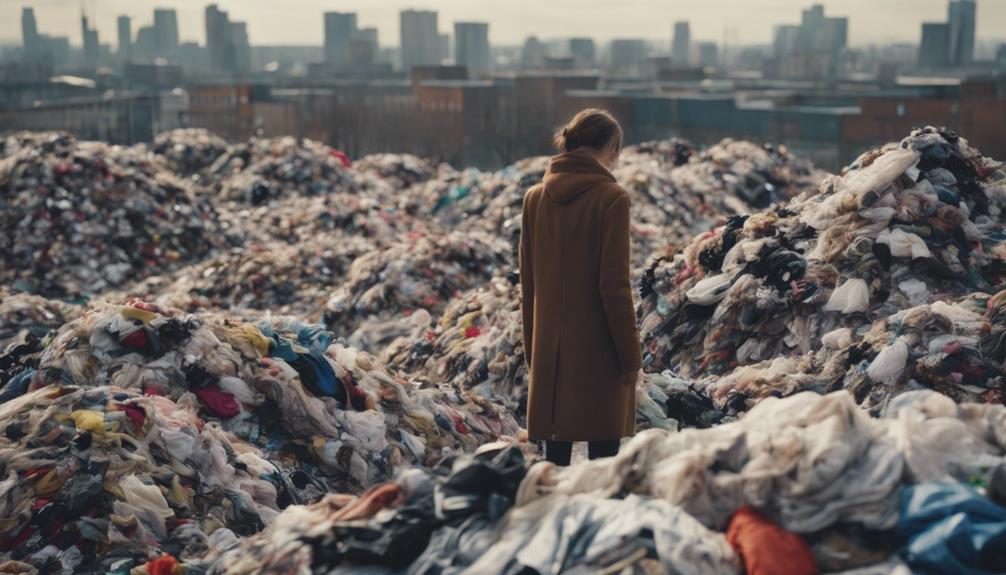
When you shop fast fashion, you're often supporting a system that exploits workers in developing countries.
These individuals face unsafe conditions and earn meager wages, while corporations rake in profits.
Labor Exploitation Issues
How is it that fast fashion thrives on the exploitation of workers, paying them less than $3 a day while reaping enormous profits? This grim reality affects millions of garment workers, who face not only economic hardship but also unsafe working conditions. The industry's obsession with low costs leads to serious labor exploitation, where the minimum wage is often a mere fraction of what's needed to survive.
Consider these heart-wrenching facts:
- Poverty wages – Garment workers in Sri Lanka earn only $54 per month, barely enough to cover basic needs.
- Long hours, low pay – In LA, workers can make as little as $4 for a grueling 10-hour shift, showcasing a shocking disparity in fair compensation.
- Unsafe working conditions – Fast fashion brands push factories to cut costs, often compromising safety and violating labor laws.
These issues create a cycle of poverty and inequality, where profits are extracted from the hard work of those at the bottom.
Environmental Degradation Impact
Fast fashion not only depletes natural resources but also exacerbates social inequalities, leaving vulnerable communities to bear the brunt of environmental degradation.
You may not realize that this industry contributes to 10% of global carbon emissions, worsening climate change and leading to severe health issues for those living in affected areas. The staggering 92 million tonnes of waste generated each year often ends up in landfills, disproportionately impacting low-income neighborhoods.
Moreover, clothing production consumes an astonishing 93 billion cubic meters of water annually, further straining water-scarce regions where many struggle to access clean water. The reliance on synthetic materials results in microplastic pollution, with textiles contributing to around 9% of annual microplastic losses in oceans, harming marine life and the livelihoods of fishing communities.
Fast fashion also exploits labor in developing countries, where workers earn less than $3 a day, perpetuating cycles of poverty. This limits their access to essential services like education and healthcare, making it clear that the social consequences of environmental degradation caused by fast fashion are dire.
Overconsumption and Its Risks
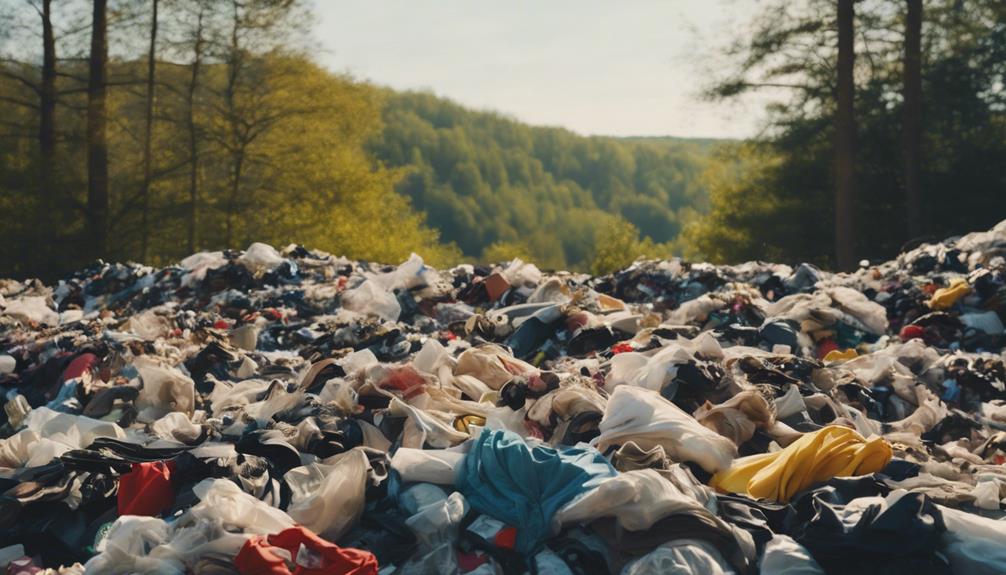
You mightn't realize it, but overconsumption in fashion isn't just a personal choice; it has far-reaching consequences.
As you buy more and wear less, you contribute to environmental degradation, economic inequality, and a growing waste crisis.
Let's explore how these issues connect and what changes you can make for a more sustainable future.
Environmental Degradation Consequences
Overconsumption in the fashion industry not only drives up carbon emissions but also leads to alarming levels of waste and pollution, threatening our planet's health. The consequences of this unchecked consumption are dire, impacting our environment in several significant ways:
- Textile Waste: An astonishing 85% of textiles produced end up in landfills, amounting to 21 billion tons annually. This waste contributes to the growing environmental degradation we face today.
- Water Pollution: The fashion industry is responsible for about 20% of industrial wastewater pollution globally, with textile dyeing being a major culprit. This contamination severely affects our water sources.
- Resource Depletion: The conventional cotton industry uses 2,700 liters of water per shirt. As you can see, sustainable clothes can drastically reduce water usage by up to 91%, helping to conserve this precious resource.
Economic Inequality Amplification
The fashion industry's relentless push for low-cost production has deepened economic inequality, leaving countless workers in poverty while consumers chase ever-cheaper trends. Fast fashion uses exploitative practices, often prioritizing profits over people. In developing countries, workers frequently earn less than $3 a day, struggling to make ends meet while fashion brands reap the benefits of their labor.
As you buy more clothing, the average retention time of garments has plummeted by 50% since 2000. This culture of overconsumption fuels a cycle where individuals with lower incomes can't keep up with constantly changing trends. The demand for low prices encourages you to overlook ethical considerations, further perpetuating economic disparities.
With clothing manufacturing doubling during that same period, the social costs are often externalized, leaving marginalized communities to face the consequences of unsustainable practices.
As consumers, your choices directly impact the lives of those who produce the very clothing you wear. By opting for sustainable fashion, you can help combat these inequalities and support fair wages, creating a more equitable industry for all.
Waste Generation Crisis
In recent years, the fashion industry has become a major contributor to the waste generation crisis, with a staggering 92 million tonnes of waste produced annually. Fast fashion and impulse buying have led to a culture where clothes are bought thoughtlessly, only to be discarded shortly after. The average lifespan of garments is just 3.1 to 3.5 years, and over 85% of textiles produced end up in landfills. This isn't just a statistic; it affects our planet profoundly.
Consider these alarming facts:
- Each year, 40% of clothes in wardrobes go unworn, highlighting our inefficiency.
- The average person keeps clothing for only half the time compared to 2000, promoting overconsumption.
- Fast fashion's model of planned obsolescence drives us to buy more, waste more.
Ethical Considerations for Workers
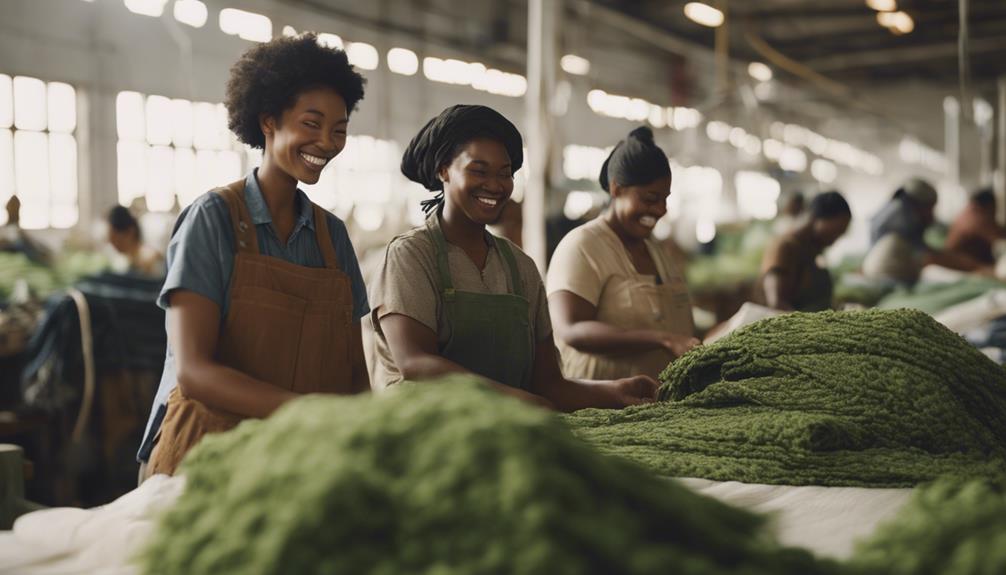
Garment workers often face exploitation and unsafe conditions, making ethical labor practices vital in the fashion industry. You mightn't realize that many workers in this sector earn shockingly low wages. For instance, some in LA factories make only $4 for a 10-hour shift, while those in Sri Lanka earn about $54 a month. This stark reality highlights the critical need for ethical considerations for workers.
Fast fashion's relentless drive for low prices puts immense pressure on wages and working conditions, leading to job insecurity and unsafe environments. As a consumer, you have the power to demand change.
Opting for sustainable fashion brands guarantees that your choices support fair wages and safe working conditions. These brands prioritize the rights and dignity of workers throughout the supply chain, advocating for their well-being.
Importance of Transparency
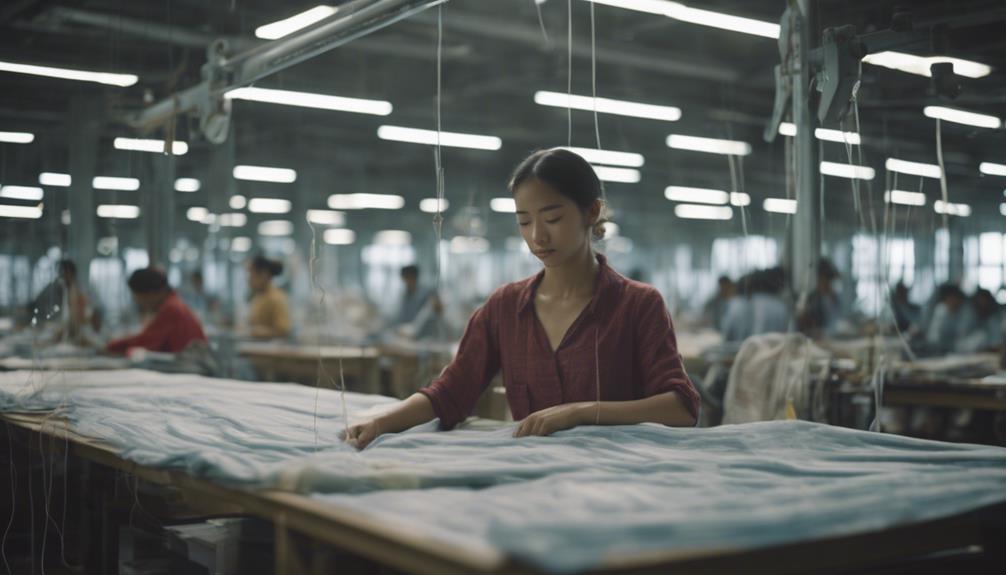
Understanding the importance of transparency in fashion allows you to make informed choices about the brands you support and the impact of your purchases. When brands share information about their supply chains, you can align your values with your shopping habits.
Here are three reasons why transparency matters:
- Trust Building: Knowing where your clothes come from fosters a sense of trust between you and the brand. You're more likely to support a company that openly shares its practices.
- Financial Impact: Over 66% of global consumers, like you, are willing to pay more for sustainable brands. When brands are transparent, it shows they genuinely care about ethical fashion, just like you do.
- Reducing Greenwashing: Transparency helps combat the misleading claims of greenwashing, ensuring the brands you choose are genuinely committed to sustainability.
Consumer Behavior and Awareness
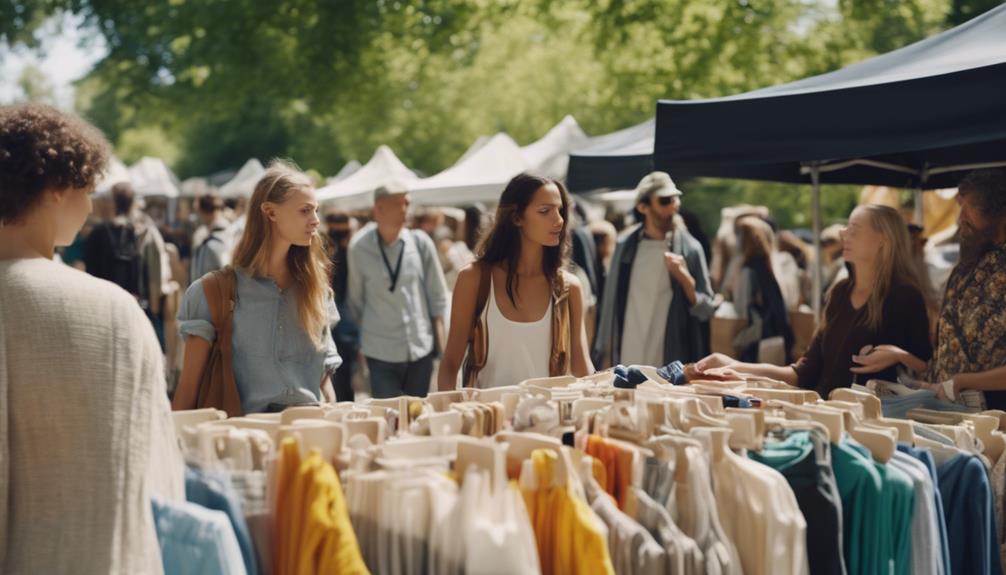
Consumer awareness about sustainable fashion is rapidly growing, driving a shift in purchasing habits towards ethical and eco-friendly choices. You might be surprised to learn that 66% of global consumers are willing to pay more for sustainable brands. This significant statistic highlights a change in consumer behavior, as people increasingly prioritize sustainability over fast fashion.
Brand transparency is essential in this movement. Consumers want to know where their clothes come from and how they're made, influencing their purchasing decisions. The rise of thrift shopping and upcycling showcases a collective effort to reduce waste and embrace sustainable practices.
To visualize these trends, consider the following table:
| Consumer Behavior | Sustainable Brands | Brand Transparency |
|---|---|---|
| Increasing thrift shopping | Eco-friendly production | Clear sourcing information |
| Willingness to pay more | Ethical labor practices | Honest marketing strategies |
| Focus on reducing waste | Sustainable materials | Open communication with consumers |
| Demand for eco-conscious options | Innovative recycling efforts | Trust-building initiatives |
As you navigate your fashion choices, remember that your awareness and actions can contribute to a more sustainable future.
Future of Sustainable Fashion

The future of sustainable fashion looks promising as innovative materials and technologies reshape the industry to meet growing consumer demand for eco-friendly products.
With the market projected to reach $8.25 billion by 2023, it's clear that you're part of a movement towards responsible consumption.
Here are three key trends that make this future exciting:
- Sustainable Materials: Brands are increasingly adopting organic cotton and biodegradable textiles, markedly reducing their environmental impact.
- Circular Economy: By promoting recycling and resource management, the fashion industry is creating new job opportunities while minimizing waste.
- Collaborative Innovation: Partnerships between brands and environmental organizations are driving systemic change, ensuring a more sustainable future for fashion.
As you embrace these changes, remember that your choices matter. Each purchase can support sustainable practices and help mitigate the industry's environmental impact.
The rise of sustainable fashion isn't just a trend; it's a necessary shift that empowers you to make a difference. Together, you can foster a more sustainable world, where fashion and environmental stewardship go hand in hand.
Frequently Asked Questions
Why Is Sustainable Fashion so Important?
Sustainable fashion's important because it reduces waste, conserves resources, and promotes ethical labor practices. By choosing eco-friendly brands, you support a healthier planet and fairer treatment for workers, helping create a better future for everyone. In addition, sustainable fashion criteria encompasses not only the materials used in clothing production, but also the overall impact on the environment throughout the entire supply chain. This means considering factors such as water and energy usage, chemical management, and the conditions in which garments are manufactured. By making educated choices and supporting brands that meet these criteria, consumers can make a positive impact on the fashion industry and the world as a whole.
What Is the Problem With Sustainable Fashion?
The problem with sustainable fashion lies in its marketing. Many initiatives claim to be eco-friendly, but they often fail to address overproduction and waste, leaving you with the same environmental issues as before.
What Do People Think About Sustainable Fashion?
People recognize sustainable fashion as ethical, trendy, and necessary. They value brands that prioritize transparency, engage in social responsibility, and promote eco-friendly practices. You'll find many consumers enthusiastic to support this growing movement with their purchases.
Why Most of Fashion Today Is Not Sustainable?
Most fashion today isn't sustainable due to fast production cycles, cheap materials, and a focus on profit over ethics. You'll find exploitative labor, excessive waste, and harmful environmental practices prevalent in the industry.
Conclusion
In a world where fashion can either save or destroy our planet, choosing sustainable fashion isn't just important—it's downright heroic!
You've got the power to change the game, revolutionizing not just your wardrobe but the entire industry.
By supporting eco-friendly brands, you're not just making a style statement; you're joining a global movement that champions the Earth and its people.
So, slip into those sustainable threads and watch as you become a trend-setting superhero for our future!

